The Gigabyte P35X v3 Review: Slim GTX980M Gaming Laptop
by Brett Howse on April 23, 2015 8:00 AM ESTSystem Performance
Gigabyte has provided the lowest speed processor that they have available in the P35X series, but it is no slouch. As a 47 watt CPU, the quad-core Core i7-4710HQ has a base frequency of 2.5 GHz and turbo of 3.5 GHz and assuming the P35X’s cooling system is up to the task, it should be able to keep the frequencies up during most scenarios. They do also offer the i7-4720HQ as an option, which bumps both frequencies another 100 MHz, and the i7-4860HQ which is 2.4-3.6 GHz and includes Iris Pro graphics.
To analyze and contrast system performance among various notebooks, we turn to our standard benchmarking suites. I have sampled several devices to compare against, including the Clevo P750ZM which has a 4K display and a desktop CPU inside, and several other gaming systems. Additionally, I have included some more typical workstation devices just for comparison. If you would like to see how the P35X compares to any other device we have reviewed, please check out our Bench section.
PCMark
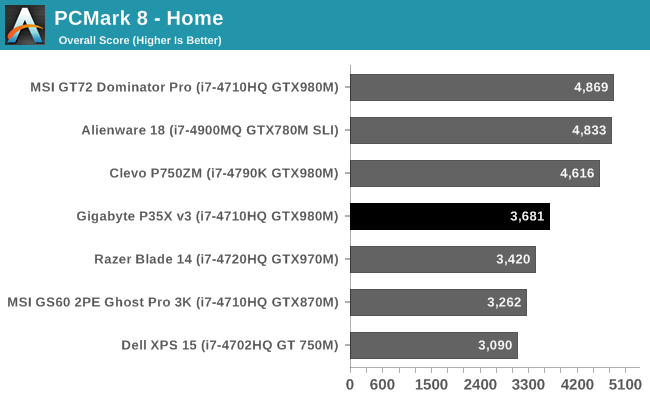

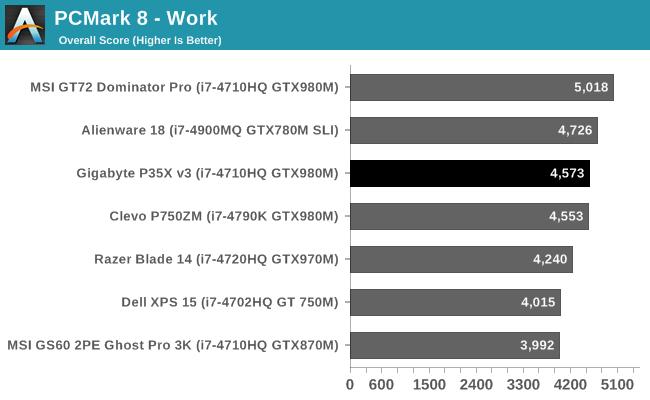
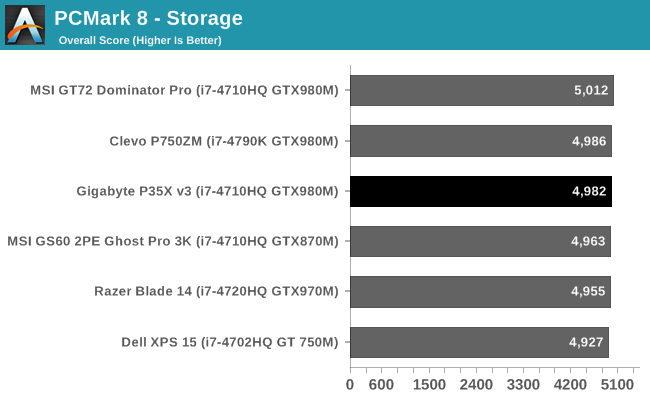
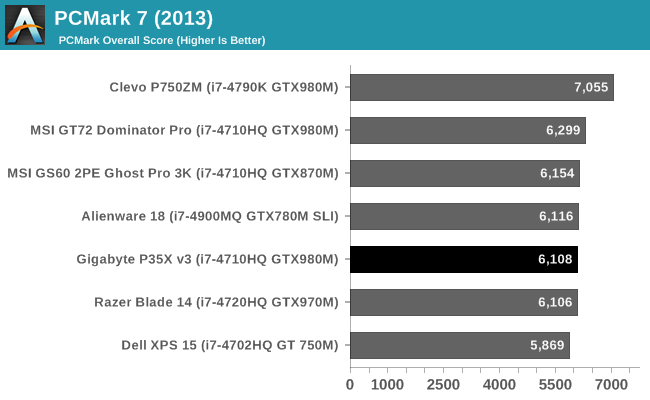
PCMark performs several tasks depending on which mode is being run, which attempt to represent real-world use cases. The nature of the workloads has several burst loads and several sustained loads. All aspects of the system are taken into account, including CPU performance, some GPU performance, storage performance, and even display resolution. That is why devices with desktop class components like the Clevo P750ZM can fall behind much slower CPUs in this test, because the Clevo comes with a 4K display.
The Gigabyte P35X fares very well here, even though the higher than normal display resolution does pull its scores back somewhat compared to the 1080p that is common in this range of devices. Somewhat non surprising is the RAID 0 configuration of the two SSDs does not really improve the PCMark Storage results, although maximum transfer rates would be increased.
Cinebench

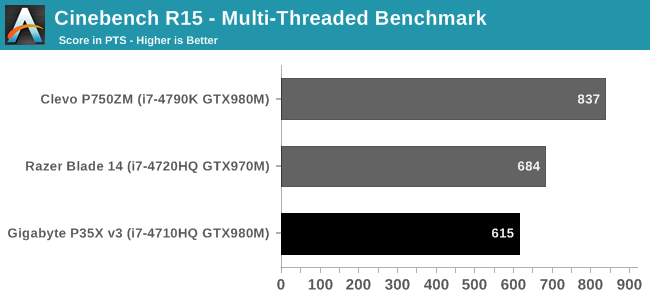
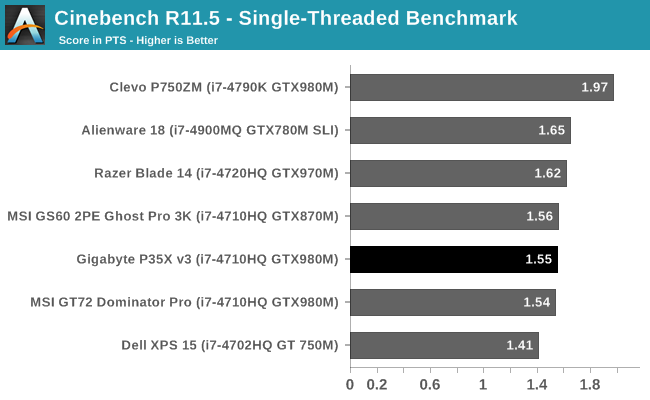
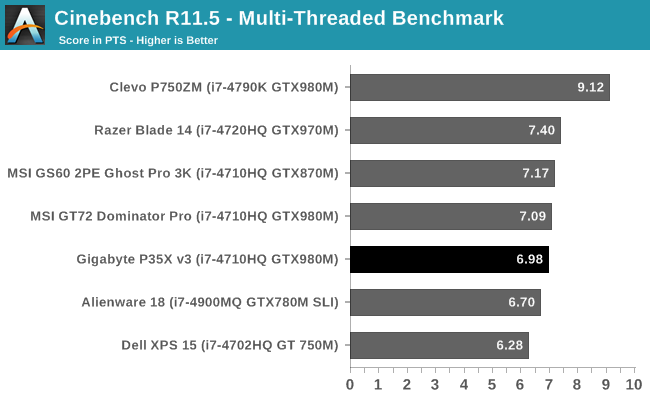
As a test of CPU based rendering, Cinebench loves IPC and frequencies. The single-threaded performance of the i7-4710HQ processor is quite good with the maximum turbo frequency available of 3.5 GHz, although I did not see much more than 3.3 GHz during the run. Mult-threaded scores are drastically increased over Ultrabook class parts due to the higher TDP parts having four cores plus hyperthreading.
x264
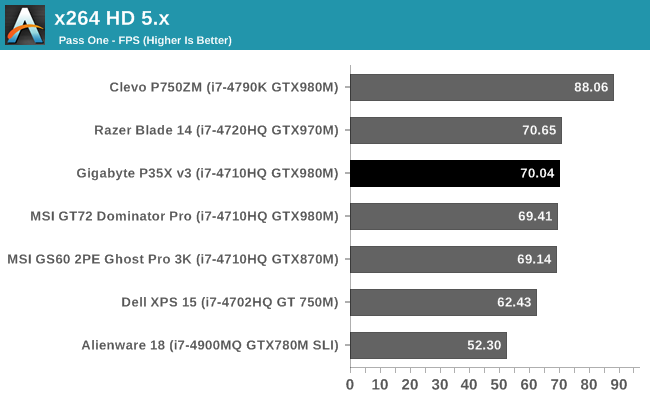
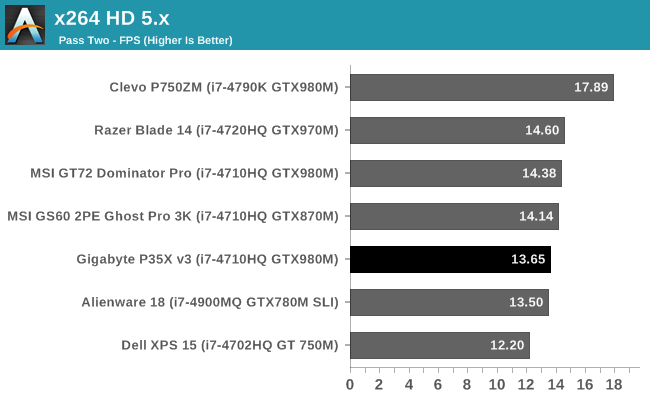
The x264 benchmark is another one that craves cores and high frequencies, and the P35X scores quite well in these sorts of scenarios. It of course cannot compete with the desktop part in the Clevo P750ZM, but that device cannot compete on weight either.
Javascript Performance

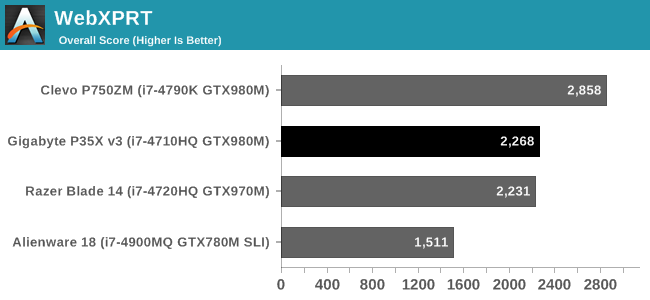
None of the high performance systems will struggle with Javascript, and all of them show performance levels significantly higher than Ultrabooks and the like.
TouchXPRT 2014
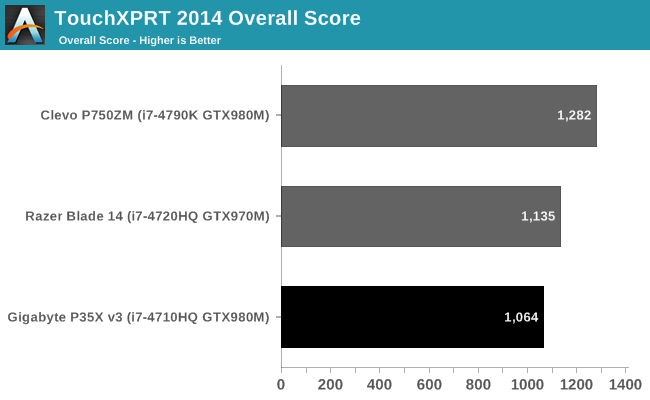
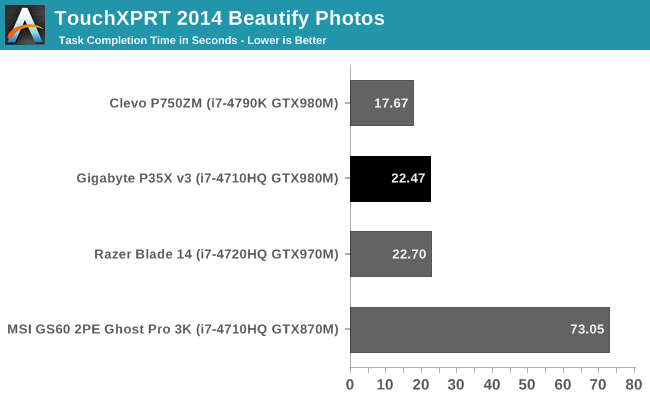
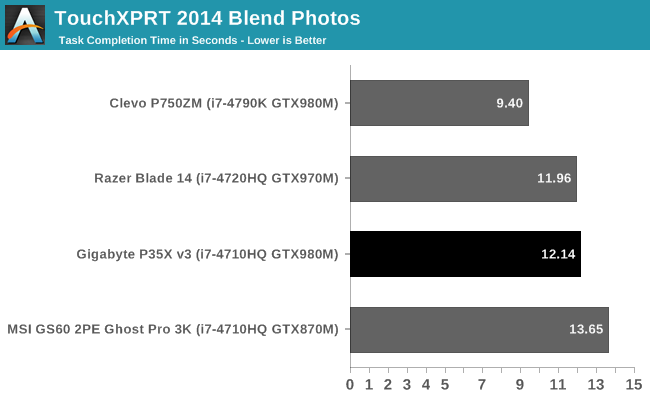
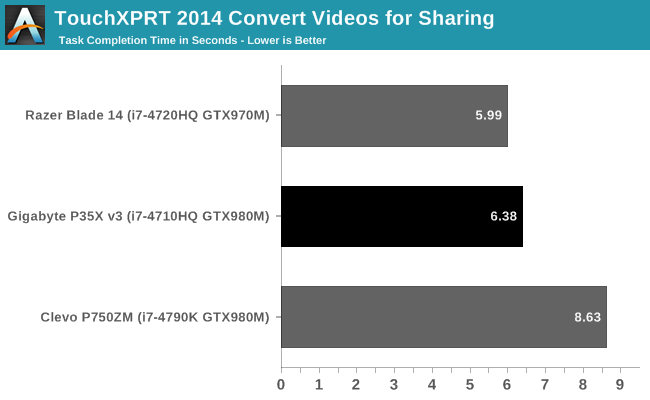
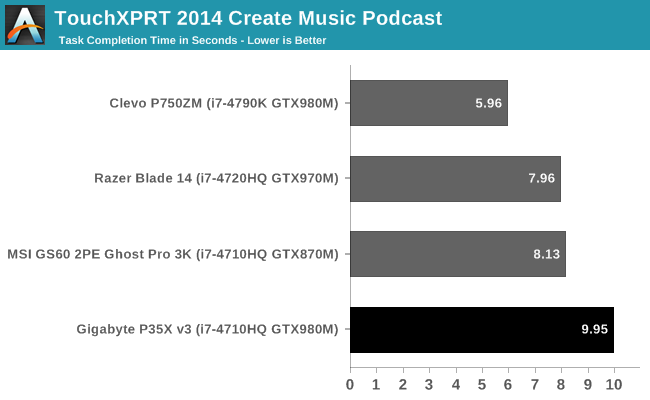
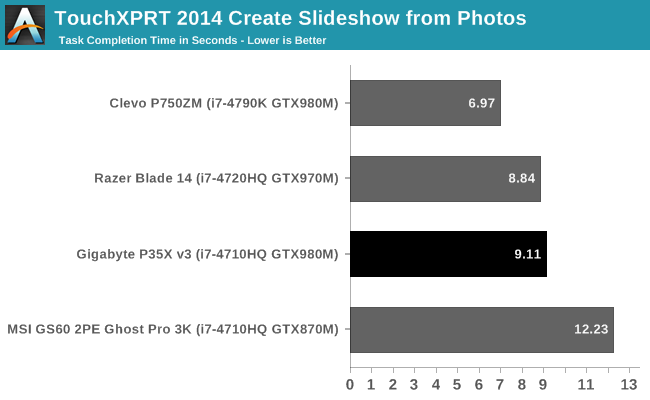
This is a benchmark which has very small short workloads, and the P35X handles this test with ease. It slots in exactly where you would expect, between the i7-4702HQ and i7-4720HQ models of the Razer Blade.
System Performance Conclusion
Overall, the P35X performs about where you would expect. System performance is quite good for any sort of CPU bound workload. I would question the use of RAID 0 for the SSDs, rather than just a single larger drive, but it does not harm performance. The base system’s 256 GB of SSD storage is not really a lot to work with, so games will likely end up on the much slower 7200rpm disk drive. Absolute performance will be up slightly, but it does not affect real world use very much.
The CPU is plenty powerful, and those that need a bit more grunt can check out the optional processors. With 16 GB of memory, the P35X should handle most desktop workloads with aplomb.
Those that buy this system though are likely more interested in gaming performance, so let’s move to that now.










55 Comments
View All Comments
Darkstone - Thursday, April 23, 2015 - link
If a 17" gaming rig throttles, than i suggest sending it back to wherever it came from. These systems are build for maximum performance, and i expect no less of them. Do not forget that the situation grows worse over time when the system builds up dust.I'm honestly amazed that throtteling is seen as even remotely acceptable. All the manufacturer has to do is follow the TDP guidelines of the components in question. If they pair an 45W CPU with cooling specced for 35W, its their fault.
nerd1 - Friday, April 24, 2015 - link
Now most systems throttle under 100% CPU and GPU load because a) people want slimmer and lighter machine b) typical gaming scenario are not that demanding. Most games are developed for multi-platform and consoles are notorious for having crappy CPU power.wykd - Friday, April 24, 2015 - link
Go play some GTA5 and take a look at CPU usage. It will easily max out all cores on my i5-3570k.xKrNMBoYx - Monday, April 27, 2015 - link
That's one game and so far it seems to happen to CPUs that have only 4-Threads. The game seems to use more than 4 threads a bit better than older games plus the game did put some serious load on CPUs (which was supposedly fixed with a patch) but wasn't as much of a problem with CPUs with more threads.Kutark - Tuesday, April 28, 2015 - link
Agreed. Honestly if you're looking for that level of gaming in a notebook you should be looking at the 8-10lb 1-2" thick ones, you're basically using it as a desktop replacement at that point. Going for a super thin notebook with top end hardware is a recipe for disaster as far as thermals.Hell i have a ~1" thick 17" with an 860m and it will occasionally throttle, and it has a very well designed cooling system.
Whats the point of having a superbadass CPU/GPU if its throttling it every time you load a game up.
Thats like having a Porsche that limits you to only 5 seconds of 100% throttle then backs it down to 60% throttle because of heating issues. Nobody in their right mind would buy a porsche that can't perform at the tops of its game all the time.
DCide - Thursday, April 23, 2015 - link
Your statement looks weird to my ears.Ikas - Sunday, May 3, 2015 - link
It truly is a shame such a great overall package is ruined by the extremely loud fans, sure gaming laptops run hot and loud but this takes it to a whole other level.kyuu - Thursday, April 23, 2015 - link
Why do you need to use more than one game to test the thermals?meacupla - Thursday, April 23, 2015 - link
I, for one, wouldn't mind trading off battery size for better and quieter cooling in a system like this.If I had one of these, most likely, I'm just going to play games on it when it's hooked up to a wall outlet, so I really don't see much point in having good battery life over better cooling and acoustics.
nikaldro - Thursday, April 23, 2015 - link
Then just buy a desktop AND a low power notebook?